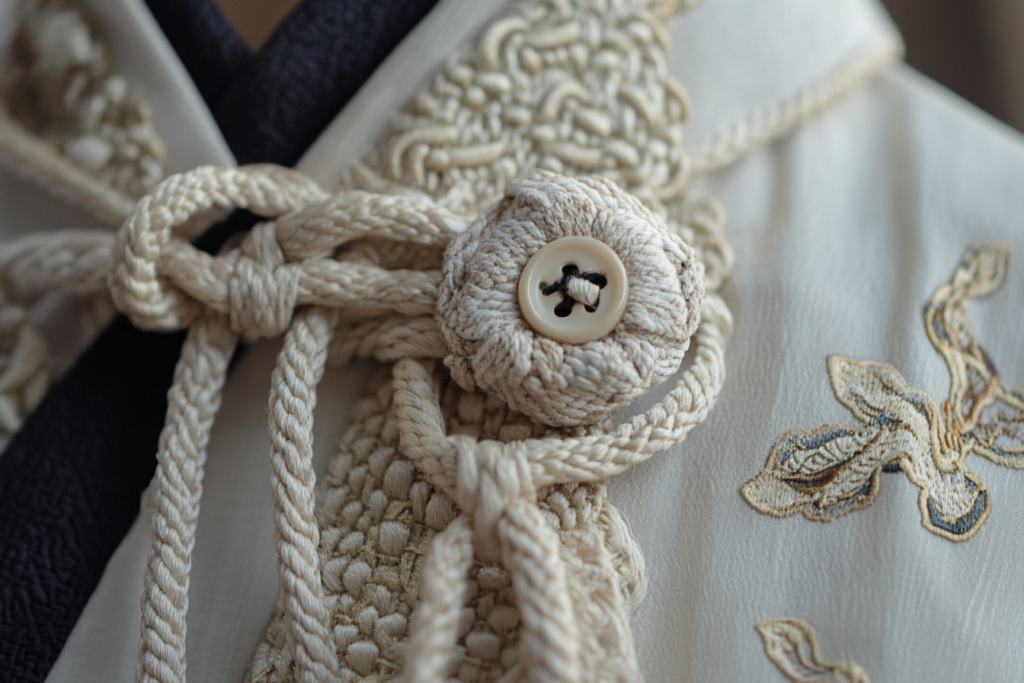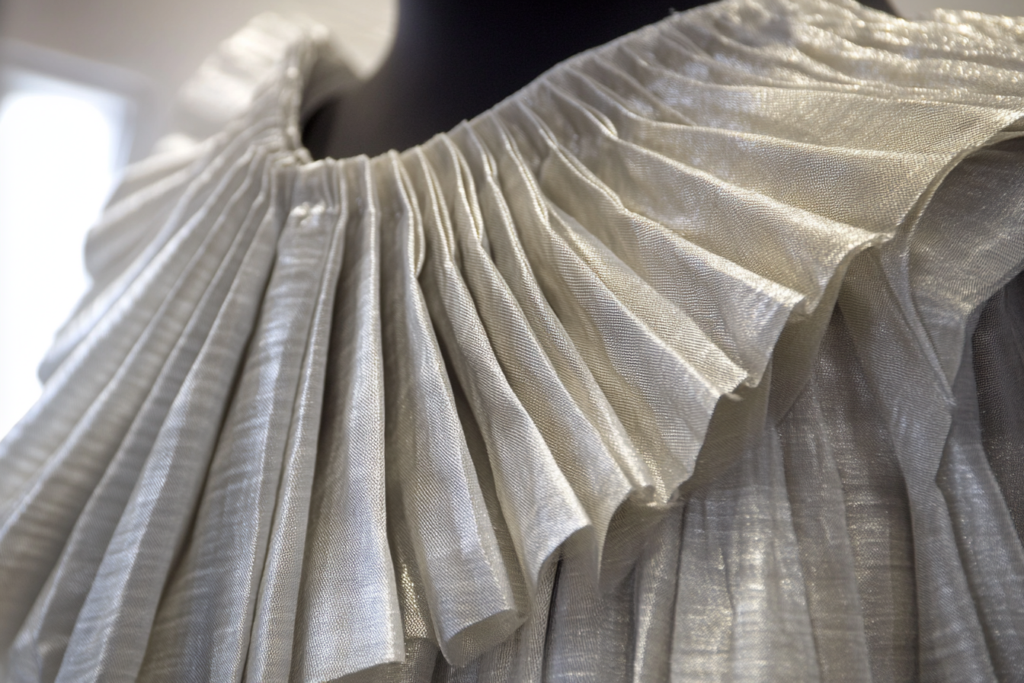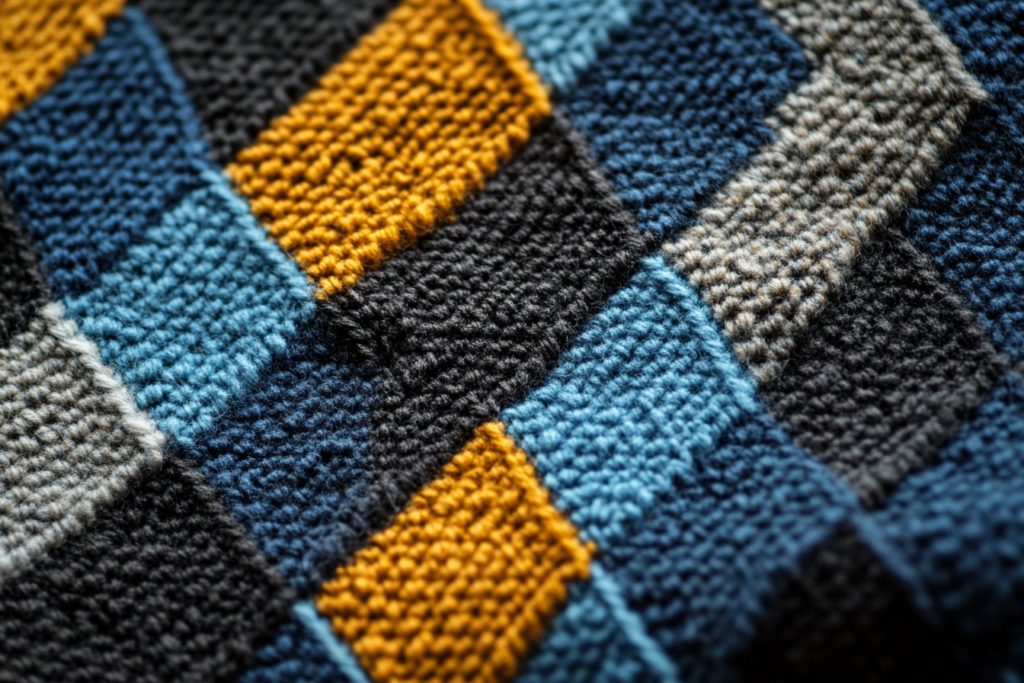Frog: A Traditional Chinese Buttoning Technique
Meta Description: The frog is a decorative, functional closure often seen in traditional Chinese garments. Made from rope, it features matching buttons and buttonholes for a unique look.
What is a Frog?
The frog is a type of decorative buttoning and fastening technique originating from China. It first appeared on traditional Chinese garments, particularly on cheongsams, qipaos, and robes, and has since become a hallmark of Chinese fashion. The frog consists of a braided cord or rope that is intricately designed to form the button and buttonhole at the same time, creating a unique, elegant, and often symbolic closure.
The frog is typically made from cord or braided rope, which is twisted and knotted to form a loop and button design. The buttons and buttonholes are often made from the same material, giving the closure a seamless, uniform appearance. Its design can range from simple loops to intricate, multi-layered knots.


How Does the Frog Work?
The frog functions as both a closure and a decorative element in traditional garments. Here’s a closer look at how it works:
1. Button and Buttonhole Design
Unlike conventional buttons, which are sewn onto the fabric, the frog closure involves a rope-like button and a corresponding loop. The button is often a decorative, braided knot, and the loop serves as the buttonhole. The rope is threaded through the garment in a way that it can be easily fastened and unfastened, often creating an aesthetically pleasing visual effect.
2. Functionality
The design allows the garment to be easily fastened, while also offering flexibility in how tight or loose the fit can be. The flexibility of the frog also makes it a convenient closure for garments that need to fit a variety of body types.
3. Decorative Purpose
The intricate braids and knots used in the frog’s design add a textural and visual appeal to the garment. Depending on the complexity of the knotting technique, the frog can become an important focal point of the outfit. Many frogs incorporate symbolic knots, with meanings tied to luck, prosperity, and protection.
History and Cultural Significance of the Frog
The frog closure has deep roots in Chinese history and culture. It is an iconic feature of traditional Chinese clothing, especially on garments worn by the Chinese nobility and royalty. Over time, it became a symbol of elegance, prestige, and sophistication. The intricate knots used in the frog also carry significant cultural meaning, with many of them representing strength, harmony, and unity.
Historically, frogs were handcrafted with great skill and attention to detail, often using silk or other high-quality threads. The braided designs symbolized wealth and social status, and the frog closures were reserved for garments worn during important events and celebrations.
Frog vs. Modern Fastenings
While the frog has a deep cultural heritage, modern fashion has adapted its design, incorporating it into contemporary clothing. Here’s how the frog compares to more commonly used fastenings:
| Frog | Conventional Button | Zipper |
|---|---|---|
| Decorative and functional, often handcrafted. | Simple, usually made of plastic, metal, or wood. | Practical, often used in garments where ease of wear is crucial. |
| Made from braided cords or ropes with intricate designs. | Available in many shapes, sizes, and materials. | Provides a snug, secure fastening, often used in more casual clothing. |
| Commonly seen on traditional garments and cultural attire. | Seen across all types of clothing, from casual to formal. | Often used for outerwear or items requiring a tighter fit, like jeans. |
The frog remains a distinctive choice for traditional Chinese garments, while modern fastenings like buttons, zippers, and Velcro are more commonly used in everyday clothing.
Modern Use of the Frog in Fashion
In recent years, the frog closure has seen a resurgence in both traditional and modern fashion. While still featured prominently on qipaos, cheongsams, and Tang suits, designers have also incorporated it into contemporary jackets, blouses, and even streetwear. The frog adds a sense of heritage, texture, and visual intrigue to otherwise simple designs.
Many designers enjoy using frogs in modern reinterpretations of classic styles, often combining the old with the new. Frogs are now made from a variety of materials, including leather, metal, and fabric. This versatility allows the frog to be used in both formal and casual settings.
Fashion Forward Uses:
- Frog closures on coats: A contemporary take on the classic Mandarin coat, using frogs as a primary fastener.
- Fashion accessories: Frogs can also be used in accessories like bags or scarves for added texture and cultural flair.
- Casual wear: Some modern casual garments incorporate frog buttons for added visual appeal, especially in garments inspired by vintage or Asian fusion styles.
Why Choose a Frog Closure?
The frog closure offers several advantages, especially for those seeking to infuse their garments with cultural significance, unique design, and elegance. Here are a few reasons why you might consider using frogs:
1. Cultural Appeal
The frog is a symbol of traditional Chinese craftsmanship and elegance. It can be a great way to introduce cultural elements into your wardrobe, especially if you’re designing or wearing garments with Asian-inspired aesthetics.
2. Decorative and Functional
Frogs are not only beautiful but also practical. They are sturdy and reliable as fasteners, making them ideal for garments that need to be fastened securely, such as robes, jackets, and tunics.
3. Versatility in Design
Whether for traditional wear or modern reinterpretations, frogs are highly versatile. Their adaptability to different fabrics and garment styles makes them an excellent choice for designers looking to add character and texture to their collections.
4. Easy to Use
Despite their intricate appearance, frogs are simple to use. The button and loop mechanism makes them quick to fasten and unfasten, making them practical for daily wear.
Conclusion: The Timeless Appeal of the Frog
The frog closure, originating in China, remains a significant cultural element in traditional clothing, symbolizing elegance and wealth. It has evolved from being a solely functional garment fastener to a decorative feature found in both traditional and modern fashion. Whether used on cheongsams, qipaos, or contemporary designs, the frog continues to captivate with its intricate beauty and cultural richness.
Incorporating frogs into your designs or wardrobe offers an opportunity to blend tradition with modernity while adding a touch of refined elegance to any garment.



